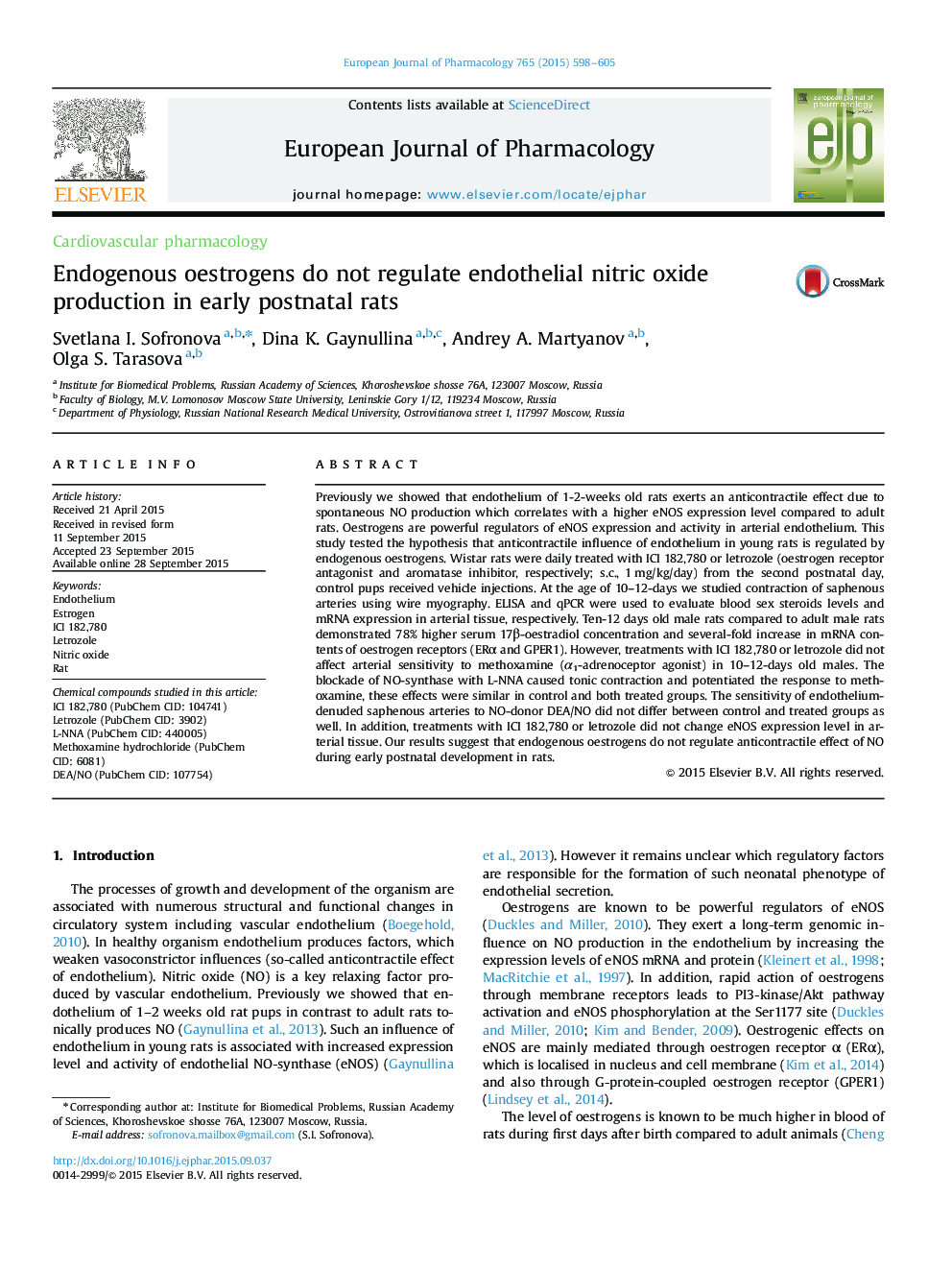| Article ID | Journal | Published Year | Pages | File Type |
|---|---|---|---|---|
| 5826966 | European Journal of Pharmacology | 2015 | 8 Pages |
Previously we showed that endothelium of 1-2-weeks old rats exerts an anticontractile effect due to spontaneous NO production which correlates with a higher eNOS expression level compared to adult rats. Oestrogens are powerful regulators of eNOS expression and activity in arterial endothelium. This study tested the hypothesis that anticontractile influence of endothelium in young rats is regulated by endogenous oestrogens. Wistar rats were daily treated with ICI 182,780 or letrozole (oestrogen receptor antagonist and aromatase inhibitor, respectively; s.c., 1 mg/kg/day) from the second postnatal day, control pups received vehicle injections. At the age of 10-12-days we studied contraction of saphenous arteries using wire myography. ELISA and qPCR were used to evaluate blood sex steroids levels and mRNA expression in arterial tissue, respectively. Ten-12 days old male rats compared to adult male rats demonstrated 78% higher serum 17β-oestradiol concentration and several-fold increase in mRNA contents of oestrogen receptors (ERα and GPER1). However, treatments with ICI 182,780 or letrozole did not affect arterial sensitivity to methoxamine (α1-adrenoceptor agonist) in 10-12-days old males. The blockade of NO-synthase with L-NNA caused tonic contraction and potentiated the response to methoxamine, these effects were similar in control and both treated groups. The sensitivity of endothelium-denuded saphenous arteries to NO-donor DEA/NO did not differ between control and treated groups as well. In addition, treatments with ICI 182,780 or letrozole did not change eNOS expression level in arterial tissue. Our results suggest that endogenous oestrogens do not regulate anticontractile effect of NO during early postnatal development in rats.
